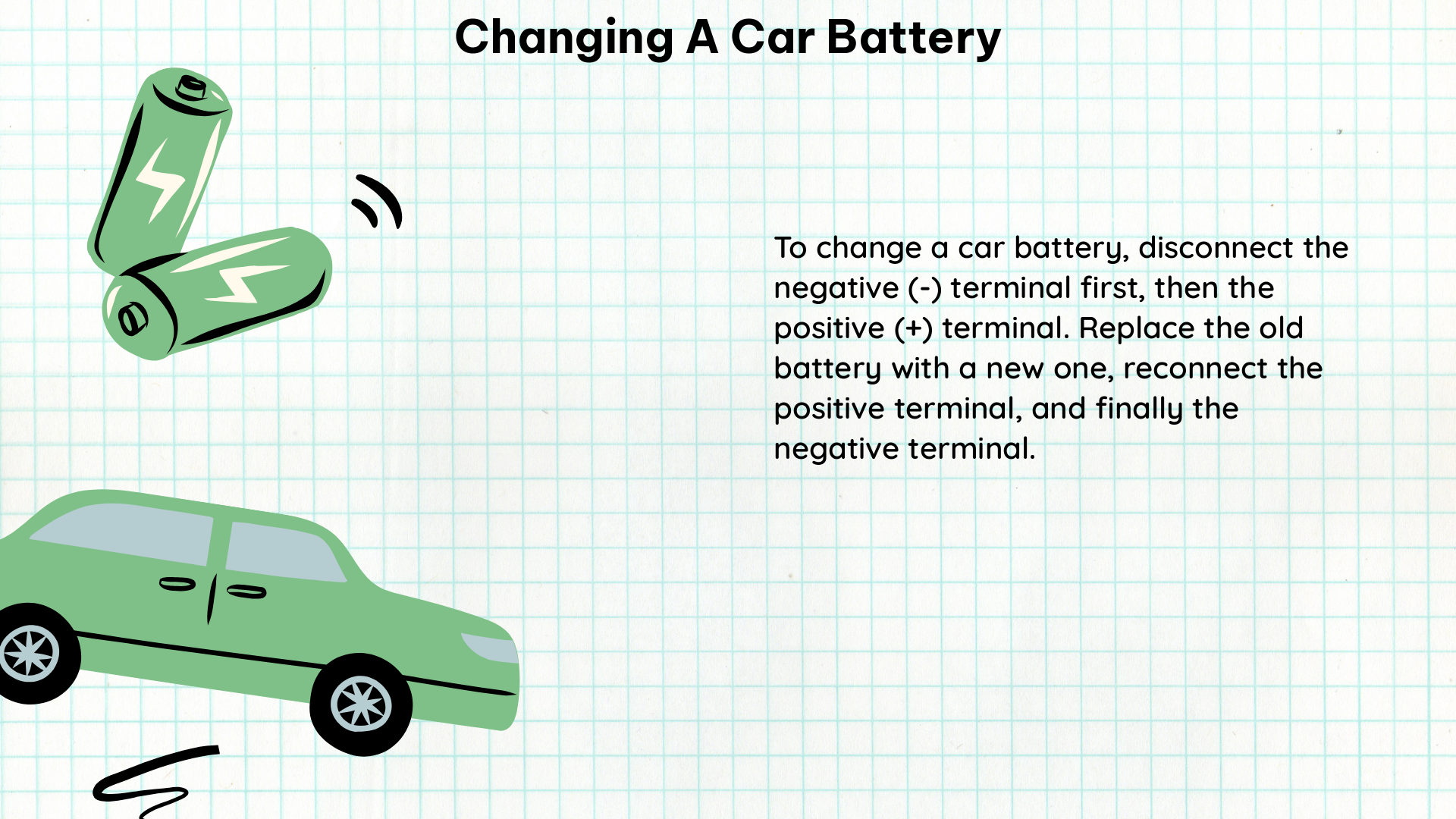Changing a car battery is a crucial aspect of vehicle maintenance, and it involves several measurable and quantifiable data points. The process of changing a car battery can be broken down into several steps, each with its own set of specifications and requirements. This comprehensive guide will provide you with the necessary information to ensure a successful battery replacement.
Determining the Appropriate Battery Size and Type
The first step in changing a car battery is to determine the appropriate battery size and type for your vehicle. The Battery Council International (BCI) provides a comprehensive database of recommended replacement battery Group Sizes based on the original equipment battery for over 160,000 vehicles. This database is available in print, online, or through an enterprise license for integration into corporate and retail systems.
The BCI Data Book contains battery application data for the past 20 years, while the online database and mobile app contain over 75 years of data for more than 160,000 vehicles and are updated quarterly. Subscription codes for a full year of database access are available for purchase on BCI’s online store.
When selecting a replacement battery, it’s essential to consider the following specifications:
| Specification | Description |
|---|---|
| Battery Group Size | The physical dimensions and terminal configuration of the battery, which must match the original equipment battery. |
| Cold Cranking Amps (CCA) | The amount of current a battery can deliver at 0°F (-18°C) for 30 seconds while maintaining a voltage of at least 7.2 volts. The CCA rating should meet or exceed the original equipment battery. |
| Reserve Capacity (RC) | The number of minutes a fully charged battery can deliver 25 amps at 80°F (27°C) before the voltage drops below 10.5 volts. The RC rating should meet or exceed the original equipment battery. |
| Dimensions | The length, width, and height of the battery, which must fit the battery tray in your vehicle. |
Removing the Old Battery

Once you have determined the appropriate battery size and type, the next step is to remove the old battery. This process involves the following steps:
- Locate the battery in your vehicle, which is typically found in the engine compartment or under the hood.
- Disconnect the negative (-) cable from the battery terminal first, using a wrench or socket.
- Disconnect the positive (+) cable from the battery terminal, using a wrench or socket.
- Remove any battery hold-down or securing hardware, such as clamps or brackets.
- Carefully lift the old battery out of the vehicle, taking care not to tilt or tip it, as this can cause acid leakage.
Installing the New Battery
With the old battery removed, you can now install the new battery. Follow these steps:
- Place the new battery in the battery tray, ensuring that it is properly aligned and secured.
- Connect the positive (+) cable to the positive terminal on the new battery, tightening the connection with a wrench or socket.
- Connect the negative (-) cable to the negative terminal on the new battery, tightening the connection with a wrench or socket.
- Secure the battery in place using any hold-down or securing hardware, such as clamps or brackets.
Disposing of the Old Battery
After installing the new battery, it’s essential to properly dispose of the old battery. Many auto parts stores and recycling centers accept used batteries for recycling. Proper disposal is important to prevent environmental contamination and ensure the safe handling of hazardous materials.
Frequency of Battery Replacement
The consensus among car owners and mechanics is that a car battery should be replaced when it shows signs of failure, such as difficulty starting the car or a decrease in battery health. However, some modern vehicles may display warning lights or error codes before the battery fails completely.
The metrics of car battery performance are changing due to modern conveniences and safety features of today’s cars, with electronics currently responsible for 40 percent of a new car’s total cost. By 2030, electronics will account for half the cost of a new car, placing higher energy demands on batteries than ever before.
Predicting battery life is difficult, and detailed physics-based models may not capture significant cell-to-cell variation that influences failure behavior in the field. Using reliability analysis techniques, it is possible to characterize this variation and even control for important factors like temperature or depth-of-discharge in order to analyze their impact on battery life.
Conclusion
Changing a car battery involves several measurable and quantifiable data points, including battery size and type, cable connections, and disposal methods. While the frequency of battery replacement may vary, it is essential to replace the battery when it shows signs of failure or when recommended by a reliable source. By following the steps outlined in this comprehensive guide, you can ensure a successful and safe battery replacement for your vehicle.
References:
– How Often Do You Change Your Car Battery?
– The Changing Metrics of Car Battery Performance
– How to Change a Car Battery
– Vehicle Battery Replacement Data

The lambdageeks.com Core SME Team is a group of experienced subject matter experts from diverse scientific and technical fields including Physics, Chemistry, Technology,Electronics & Electrical Engineering, Automotive, Mechanical Engineering. Our team collaborates to create high-quality, well-researched articles on a wide range of science and technology topics for the lambdageeks.com website.
All Our Senior SME are having more than 7 Years of experience in the respective fields . They are either Working Industry Professionals or assocaited With different Universities. Refer Our Authors Page to get to know About our Core SMEs.